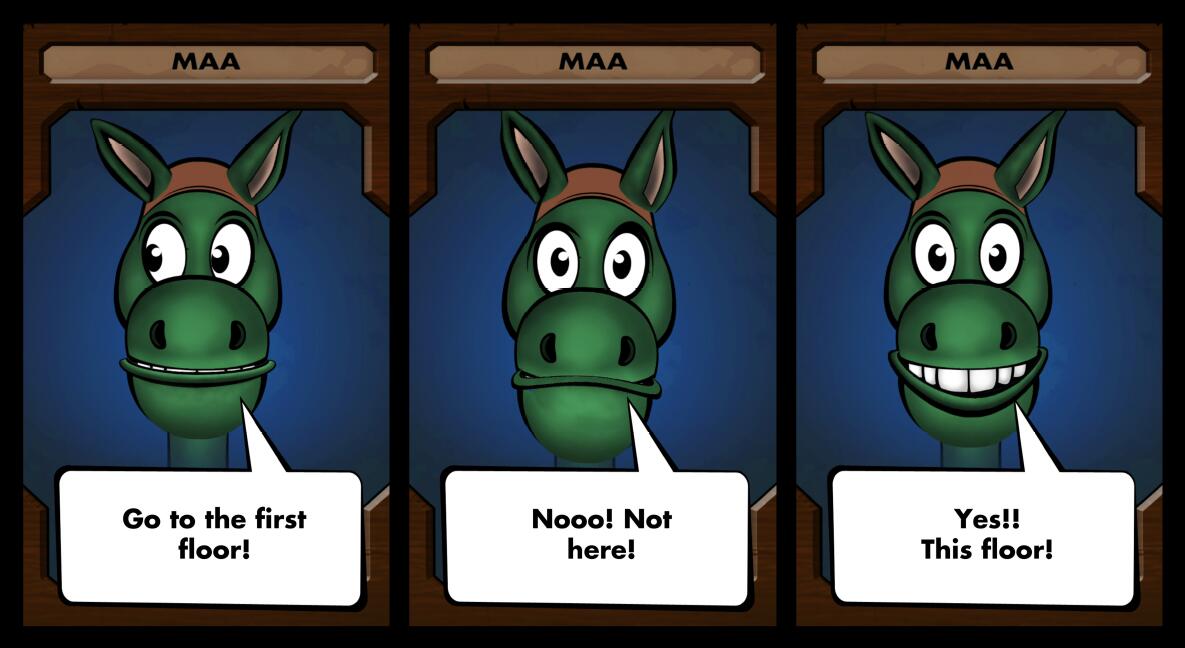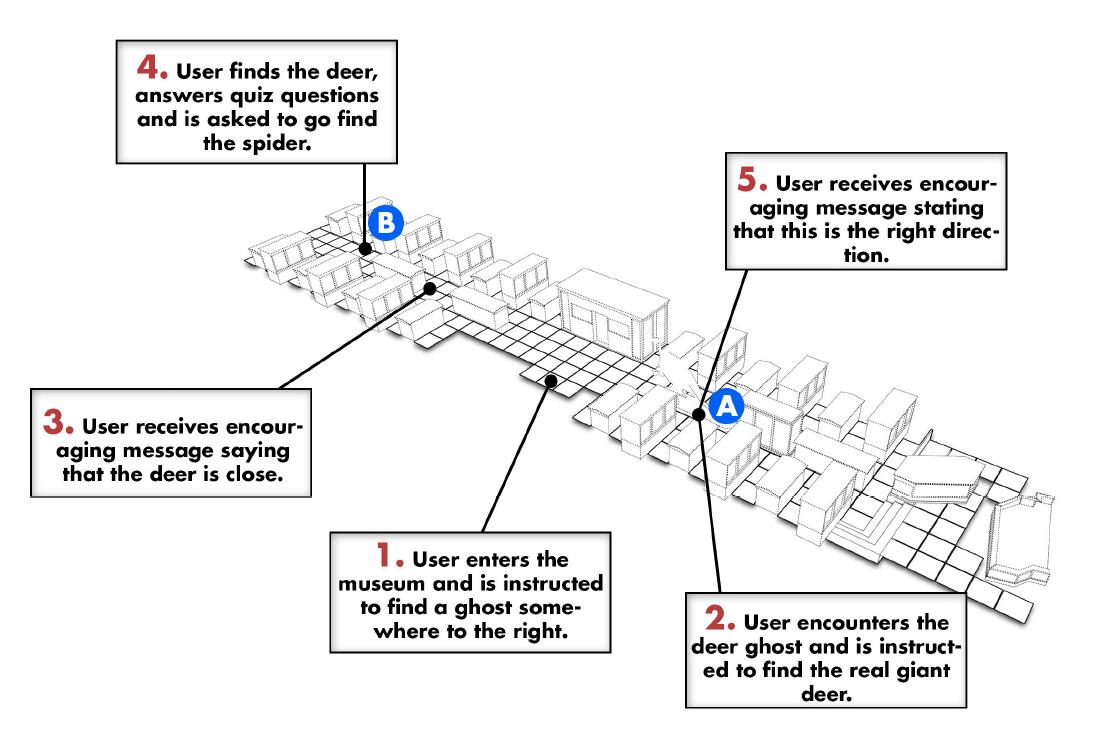Ghosts!
Creator: Tommy Nilsson, Alan F. Blackwell, Carl Hogsden and David Scruton
A Bluetooth LE Game for Museum Exploration
Ghosts! is a location-based Bluetooth Low Energy Mobile Game. When the user walks around the museum with Ghosts, they will encounter ‘ghosts’ on the screen, saying that they are lost and need the visitors’ help to find their home artefacts. The artefact is equipped with its own BLE beacon, which is sent out periodically for the device to detect. When walking through the museum space, the visitors will be informed whether their direction is correct or not, based on the received signal strength of the beacon.

If the signal is blocked, the ghost will require the visitor to walk into a more open space or raise the smartphone to redirect. By carefully selecting the artefacts for each ghost, the developer can also guide the visitors to visit different key artefacts in an appropriate order. After completing the tasks, the user will receive achievements and be invited by the final ghost to visit other museums as well.

The creators developed this game aiming at encouraging Interaction between the museum surroundings and the visitors. The University of Cambridge Museums has eight museums within walking distance, which will definitely benefit from a larger volume of visitors and more connections between each museum. This interactive design enables the museum to attract new audiences and make innovative use of digital technology, and offers the option to plan the route for visitors to mediate a narrative or other experience. It is an innovation from the traditional stamp-collection or card-collection games adopted by museums, and can be implemented on the visitors’ smartphones instead of devices specifically designed for each museum or those restricted by time, space and size.
Bluetooth Low Energy (BLE), the primary technology adopted by Ghosts!, is a new wireless technology with low power consumption, while consistently sending out beacons for communication between devices. The long-lasting battery of about two years for each BLE beacon installed for the artefact, and the application on visitors’ mobile phone ensure that the museum itself does not require an expansive modification of technical infrastructure. The signal strength received from the target beacon indicates the distance between the ghost and its home, making the location-based function available without using the unstable grid positioning system, but the physical context within the museum.
To ensure the freshness and attractiveness of this technology, the theme of ‘ghosts’ enriches the visit with mysterious factors and more engagement from the visitors. Though the tasks are simple, the visitors are carrying the responsibility to help the ghosts. Previous examples of enhancing visitors’ interaction with artefacts include a card-collecting game from Cambridge University1, Hypertag (infrared transmitter) from The Fitzwilliam Museum2, the Shufdy project from Bristol3 and a museum trail from The Rubens House4. While still facing obstacles like the signal fluctuation and interior design, BLE is a promising technology for the museum exploration because of its low price, efficient power and large scale. The theme and story of ‘ghosts’ can be further designed and customized for each museum.